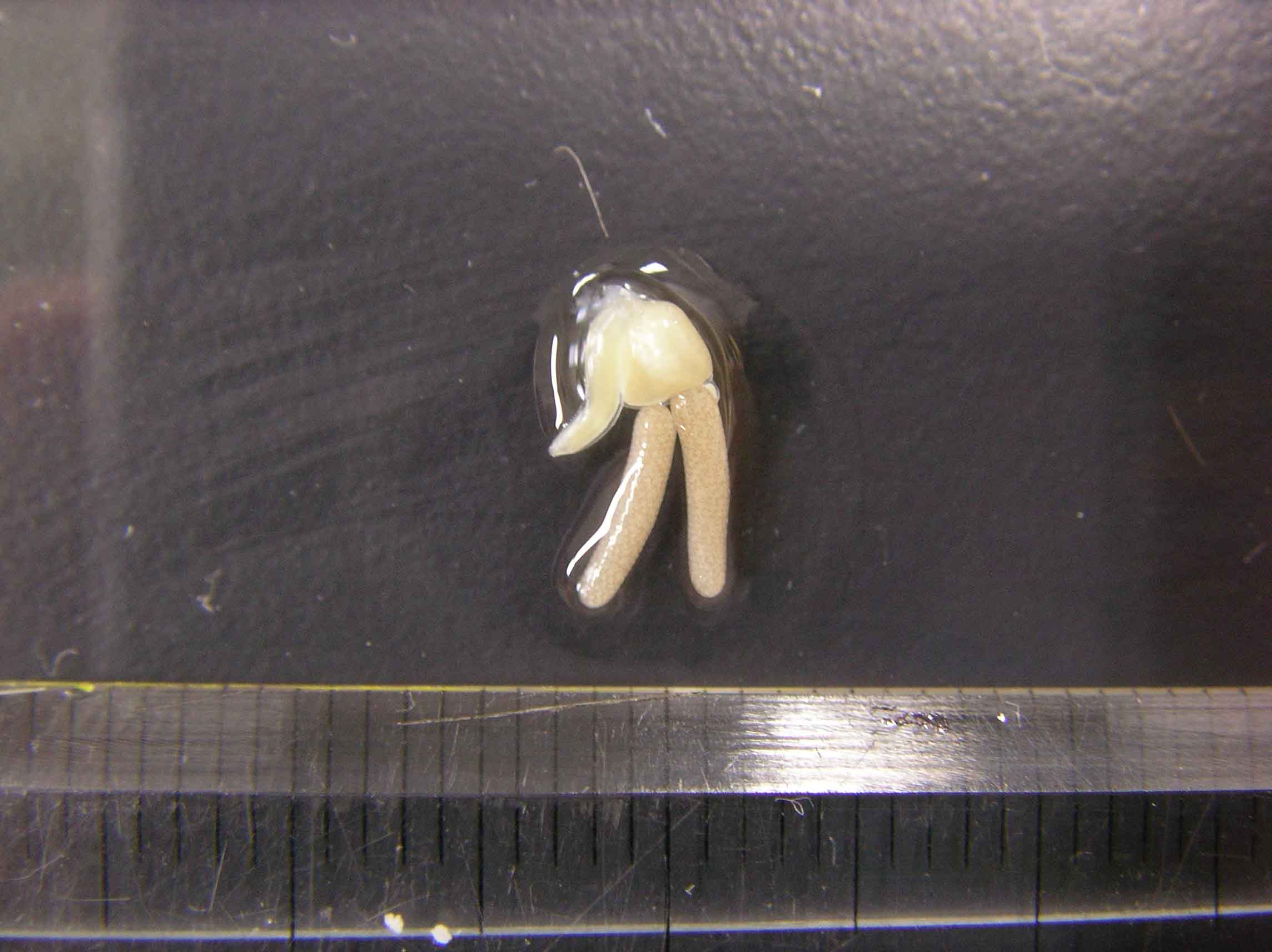

| Parasite | Clavella perfida |
|---|---|
| Taxonomy | Arthropoda, Crustacea, Copopoda |
| Host | Alaska pollack (Theragra chalcogramma) |
| Infection site | Gill |
| Clinical sign | Parasites (5-10 mm) are visually observed in the gill filaments (Fig. 1). |
| Parasitology | Clavella perfida is a parasitic copepod. A parasite possesses 2 egg sacks. It attaches to the gill filament by a bulla. Only a female can be visually observed (Fig. 2). |
| Pathology | Its pathogenicity to host fish is low (Katakura et al., 2004). |
| Health hazard | Since this parasite is not infectious to human, it is harmless in food hygiene. |
| Diagnosis | Check the parasite in the gill filament. C. perfida can be readily differentiated from Haemobaphes diceraus parasitizing the gill of Alaska pollack, because the latter is larger and has a long neck extending to the hostfs bulbus arteriosus. |
| References |
Katakura, S., Y. Sakurai, H. Yoshida, A. Nishimura, K.
Konishi and T. Nishiyama (2004): Influence of the parasitic copepod Haemobaphes diceraus and Clavella perfida on growth and maturity
of walleye pollock Theragra chalcogramma.
Nippon Suisan Gakkaishi, 70, 324-332. |
Fig. 1. Clavella perfida parasitizing on the gill of Alaska pollack.
Fig. 2. C. perfida from Alaska pollack. Note the 2 egg sacs.
